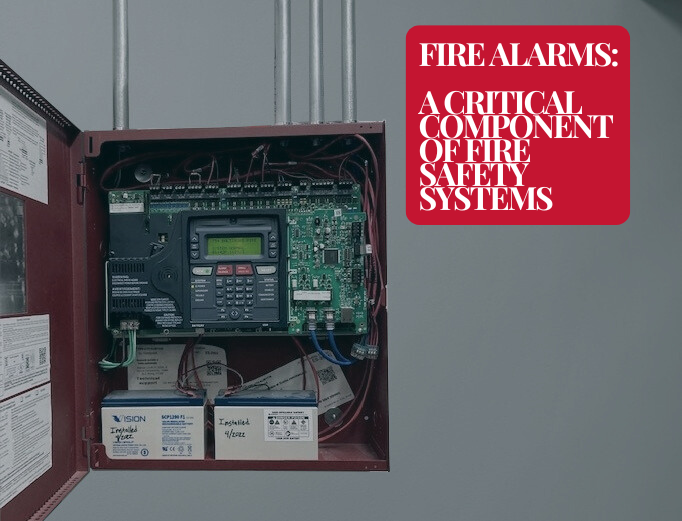Fire alarms are a vital part of any fire safety strategy, playing a crucial role in protecting lives and property. From residential homes to large commercial buildings, fire alarms are designed to detect smoke, heat, or flames and promptly alert occupants to potential danger. Their ability to provide an early warning has proven essential in saving lives and minimizing property damage during fire emergencies. How Fire Alarms Work Fire Alarms utilize various sensors to detect signs of fire, including smoke, heat, or flames. Here’s a closer look at the types of detection components used:
- Smoke Detectors: These are the most common fire alarm devices and typically use optical or ionization sensors to detect smoke particles in the air.
- Heat Detectors: These detectors respond to rapid temperature changes or a set temperature threshold, making them ideal for areas where smoke detectors might trigger false alarms.
- Flame Detectors: Flame detectors use optical sensors to identify infrared or ultraviolet light emitted by flames, providing reliable detection in environments where flames are the first sign of fire.
Activation and Alarm Notification Once the fire alarm sensors detect smoke, heat, or flames, they send a signal to the control panel, which functions as the central brain of the fire alarm system. The control panel then triggers the alarm devices, which can include:
- Audible Alarms: Devices such as horns, sirens, or bells that produce sounds to alert occupants.
- Visual Alarms: Strobe lights or flashing lights designed to catch the attention of occupants, particularly essential for those with hearing impairments.
- Voice Enunciation Systems: Systems that provide spoken instructions, guiding occupants on evacuation procedures.
Early Warning Systems The primary function of a fire alarm system is to offer early detection and warning in the event of a fire. When the sensors detect dangerous conditions like smoke or excessive heat, the system activates audible and visual alarms throughout the building. This immediate alert provides occupants the critical time they need to evacuate promptly, reducing the risk of injury or loss of life.
Remote Monitoring and Control Modern fire alarm systems include remote monitoring capabilities, allowing authorized personnel to oversee the system’s status from a distance. These systems can send real-time alerts during a fire event and provide remote control functions, such as silencing alarms or resetting the system. This feature is particularly valuable for large commercial properties, where rapid response and centralized control are essential.
Conclusion Fire alarms are not just an essential safety feature – they are life saving devices. Their ability to detect fire hazards early and alert building occupants is crucial in minimizing harm and property loss. Regularly maintaining and updating your fire alarm system, ensuring remote capabilities, and selecting the appropriate detectors for your environment are key to ensuring maximum protection. At the end of the day, a properly functioning fire alarm system provides peace of mind, knowing that both lives and assets are safeguarded against the threat of fire.

